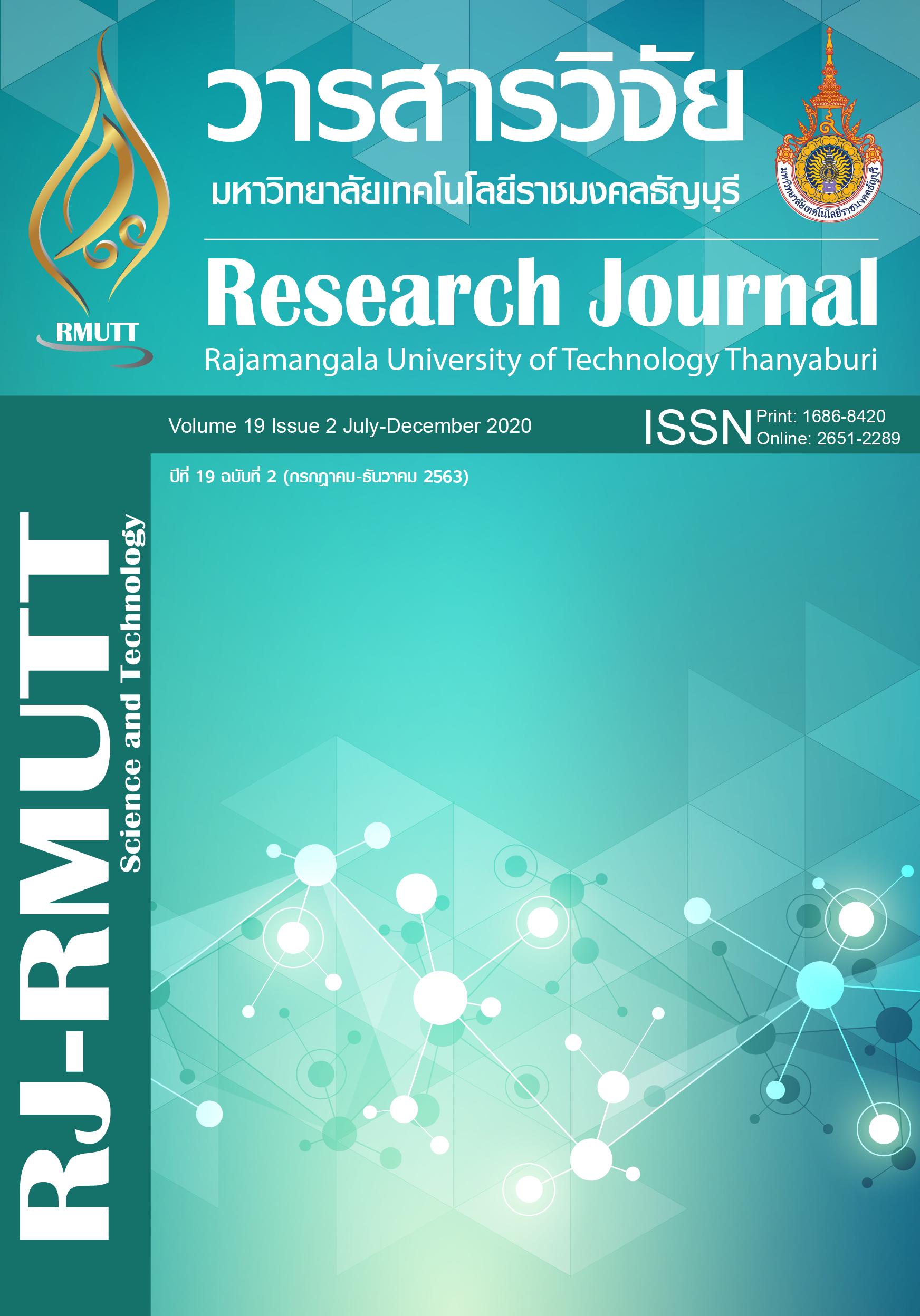The Quality Appearance of Latent Fingerprint on Various Metals by Using Black Dust Powder
Main Article Content
Abstract
The objective of this research was to study the appearances of latent fingerprints occurring on different types of metal by using the dusting method. The black power was used to compare quality appearances. The sample group consisted of six members including 3 men and 3 women. The experiment was conducted by testing3 men on five different types of metal including copper sheet (C1100), Brass sheet (C2801), Galvanized sheet (G3302), coin and Aluminum. The duration of the experiment was 1 hour, 3 hours, 6 hours, 1 day, 3 days, 5 days, 1 week, 2 weeks, 3 weeks and 4 weeks repeating 3 times. The women was testing the same as men. After that, the AFIS machine was used for minutiae count to compare the appearances of the latent fingerprint. The results indicated that the appearances of latent fingerprint between male and female were significant difference. The statistically significant result was 0.05 (T = 1.672, Sig = 0.000) After consideration, The appearances of latent fingerprint in male were more obvious than female and the quality of latent fingerprint appearances in each metal was statistically significant difference 0.05 (F = 7979.118, Sig = 0.000) founded that copper, brass and coin had high resolution respectively there was no a significant difference on the quality of latent fingerprint appearances in each duration with repeating 3 round and times. Types of metal giving the high resolution are copper, brass and coin respectively. As the different types of metal have different porous, the different porous occur due to different chemical bond. The research indicated that metals are the interesting physical evidence due to the high in daily life. Although
1 month passed, the resolution’s still obvious. Therefore; Metal can be used for physical evidence in a crime scene.
Article Details

This work is licensed under a Creative Commons Attribution-NonCommercial-NoDerivatives 4.0 International License.
References
Jackson ARW, Jackson JM. Forensic Science Paperback. 3rd ed. England: Prentice Hall; 2011.
Choi MJ, McDonagh AM, Maynard P, Roux C. Metal-containing nanoparticles and nano-structured particles in fingermark detection. FORENSIC SCI INT 2008;179(1):87-97.
ไทพีศรีนิวัติ ภักดีกุล. การตรวจพบพยานหลักฐานจากสถานที่เกิดเหตุ. พิมพ์ครั้งที่ 2. เชียงใหม่: คณะสังคมศาสตร์ มหาวิทยาลัยเชียงใหม่; 2547.
อรรถพล แช่มสุวรรณวงศ์. นิติวิทยาศาสตร์ 2 เพื่อการสืบสวนสอบสวน. พิมพ์ครั้งที่ 4. กรุงเทพมหานคร: ทีซีจีพริ้นติ้ง; 2546.
Ramos AS, Vieira MT. An efficient strategy to detect latent fingermarks on metallic surfaces. FORENSIC SCI INT. 2012;217:196-203.
เอกจิตรา มีไชยธร.การปรากฎขึ้นของลายนิ้วมือแฝงบนกระดาษด้วยนินไฮดริน [Latent fingerprints on paper developed with ninhydrin]. วารสารวิชาการ มหาวิทยาลัยศิลปากร. 2561;2(1):247-55.
เสาวภาคย์ เบียซิน. องค์ประกอบทางเคมีของลายนิ้วมือที่มีผลกระทบต่อการติดของลายนิ้วมือแฝงในประชากรไทย [Chemical compositions of fingerprints affect latent fingerprinting among Thai populations]. วารสารวิชาการ มหาวิทยาลัยศิลปากร. 2557;1(4):50-62.
Qing G, Zhang M, Visualizing latent fingerprints by electrodeposition of metal nanoparticles. Journal of Electrochemical Chemistry. 2013;693:122-6.


